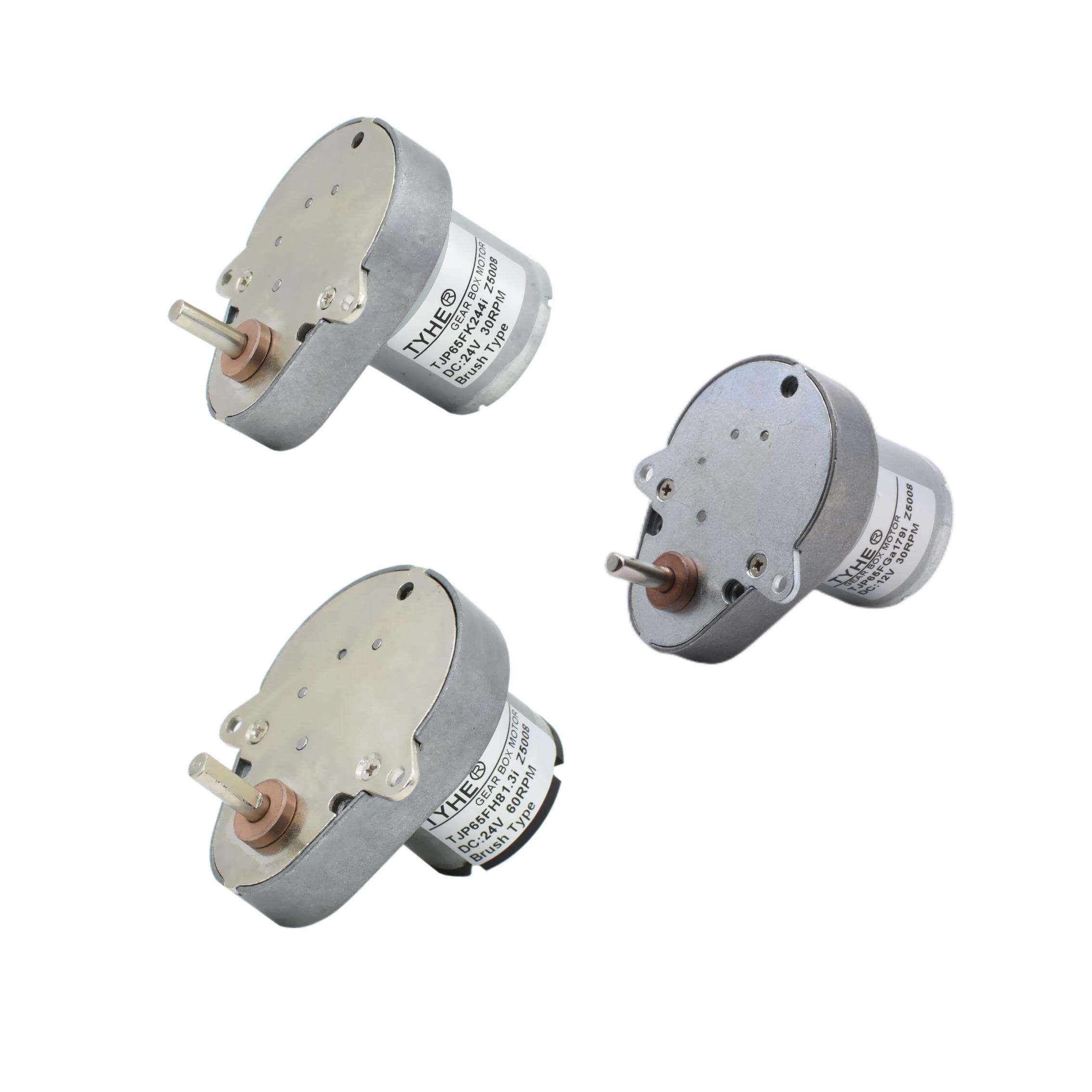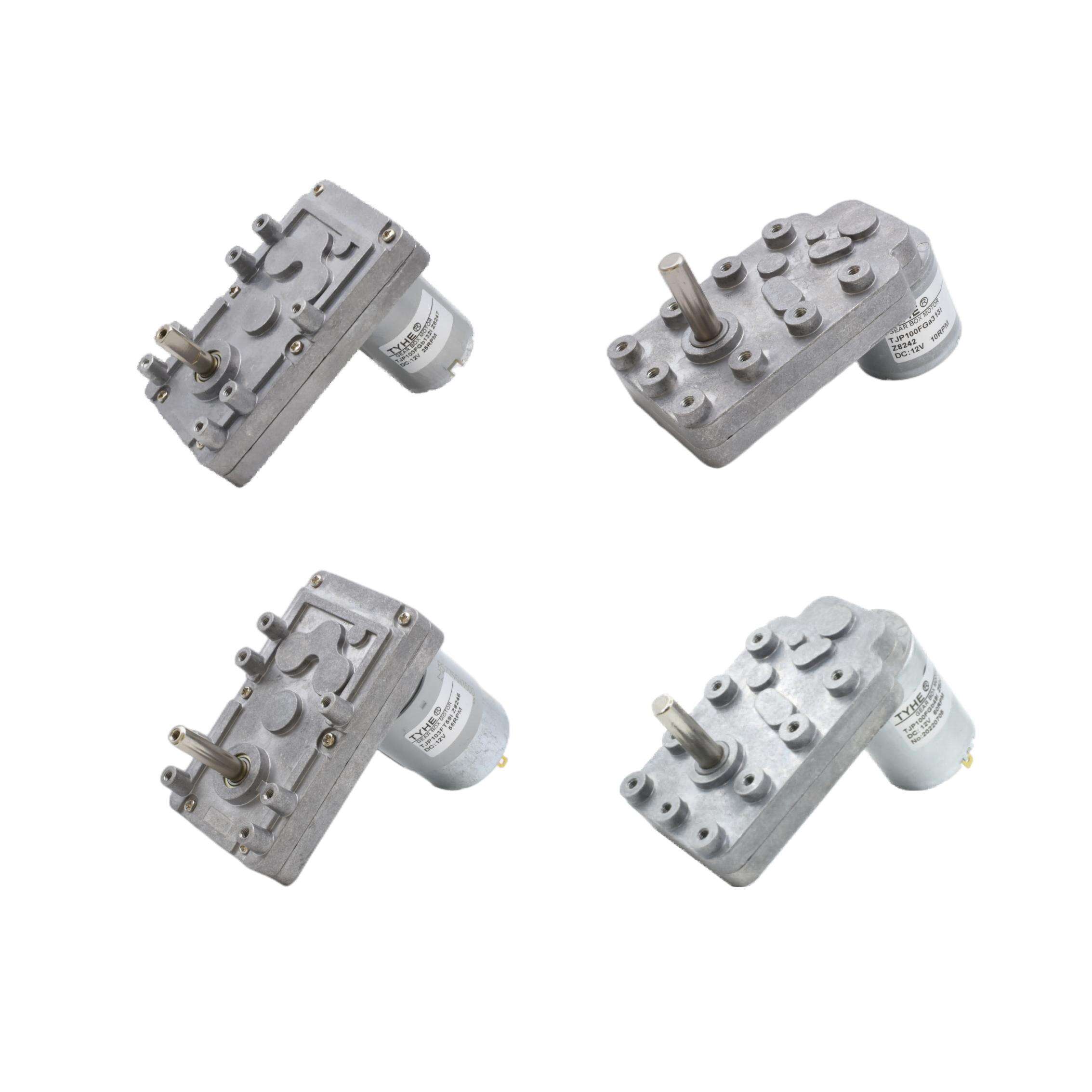What Is the Difference Between DC Motors and AC Motors?
Electric motors are at the heart of countless machines and devices, converting electrical energy into mechanical energy to power everything from household appliances to industrial machinery. Among the many types of electric motors, two main categories dominate: the DC Motor and the AC motor. While they share the same fundamental purpose, they differ significantly in design, operation, control, and application.
Understanding the differences between a DC Motor and an AC motor is crucial for engineers, technicians, manufacturers, and consumers who need to select the right motor for a specific application. This guide provides a detailed comparison between the two, covering working principles, structural differences, advantages, disadvantages, and common uses.
Basic Definitions
DC Motor – A motor powered by direct current, where electricity flows in one direction. It converts DC electrical energy into mechanical rotation using a commutator and brushes or electronic switching in brushless designs.
AC Motor – A motor powered by alternating current, where the electrical current periodically reverses direction. It typically uses a stator and rotor, with no brushes in most designs.
Working Principles
DC Motor Operation
A DC Motor works on the principle that a current-carrying conductor placed in a magnetic field experiences a mechanical force. In a brushed DC Motor, the commutator periodically reverses the direction of current in the armature windings, maintaining continuous torque in one direction. Brushless DC motors use electronic controllers to achieve the same effect without mechanical commutation.
AC Motor Operation
An AC motor operates based on the principle of electromagnetic induction, discovered by Michael Faraday. The alternating current in the stator windings creates a rotating magnetic field, which induces current in the rotor (in induction motors) or interacts with a permanent magnet rotor (in synchronous motors) to produce torque.
Structural Differences
Components of a DC Motor
Armature (rotor)
Commutator
Brushes (in brushed types)
Field windings or permanent magnets
Bearings and housing
Components of an AC Motor
Stator (stationary part with windings)
Rotor (squirrel cage or wound rotor)
Bearings and housing
In synchronous motors, a rotor with permanent magnets or electromagnets
One key structural difference is the presence of brushes and a commutator in a brushed DC Motor, which require maintenance. Most AC motors are brushless and thus require less mechanical upkeep.

Power Source
DC Motors require direct current, which can be supplied by batteries, DC power supplies, or rectifiers that convert AC to DC.
AC motors run directly on mains AC power, making them more compatible with standard electrical grids without additional conversion equipment.
Speed Control
DC Motor Speed Control
Speed control is one of the biggest advantages of a DC Motor. By varying the supply voltage or adjusting the armature and field current, precise speed regulation is possible over a wide range. This makes DC motors ideal for applications requiring fine speed adjustments, such as elevators, rolling mills, and electric vehicles.
AC Motor Speed Control
Traditionally, AC motor speed was tied to the supply frequency, making speed control more challenging. However, with the advent of variable frequency drives (VFDs), AC motors can now be controlled more precisely, although the system may be more complex and expensive compared to basic DC Motor control.
Torque Characteristics
DC Motor – Delivers high starting torque, which is valuable for applications that need a strong initial push.
AC Motor – Generally has lower starting torque (in induction types), though synchronous designs can be optimized for higher torque.
Efficiency and Performance
DC Motors can be highly efficient, especially in brushless designs, but brushed types suffer efficiency losses due to brush friction.
AC motors, especially three-phase induction motors, are known for their robust efficiency and smooth operation under continuous loads.
Maintenance Requirements
DC Motors with brushes require periodic replacement of brushes and maintenance of the commutator.
Brushless DC motors and AC motors have minimal mechanical wear components, leading to lower maintenance demands.
Cost Considerations
DC Motors are often more expensive for the same power rating due to their complex construction and control requirements.
AC motors are generally less costly to manufacture, especially in large sizes, and are widely available in standard ratings.
Applications
DC Motor Applications
Electric vehicles
Robotics and automation
Elevators and hoists
Rolling mills and conveyors
Portable tools powered by batteries
AC Motor Applications
Fans, pumps, and compressors
Industrial machinery
HVAC systems
Home appliances
Large-scale manufacturing equipment
Advantages and Disadvantages
Advantages of a DC Motor
Excellent speed control over a wide range
High starting torque
Smooth acceleration and deceleration
Can be powered by batteries for portable applications
Disadvantages of a DC Motor
Requires more maintenance in brushed versions
More complex power supply if operating from an AC source
Brushes and commutators can cause electrical noise
Advantages of an AC Motor
Lower maintenance due to brushless design
Cost-effective for high-power applications
Direct compatibility with AC power grids
High durability and reliability
Disadvantages of an AC Motor
Speed control without VFDs is limited
Lower starting torque in some designs
Can be less efficient in variable-load conditions without proper control systems
Technological Advancements
Recent innovations are blurring the lines between DC Motors and AC motors:
Brushless DC motors use electronic commutation, combining the efficiency of AC designs with the control flexibility of DC.
Modern VFDs enable AC motors to offer speed control once only possible with a DC Motor.
Hybrid systems are being developed for electric vehicles and renewable energy applications, taking advantage of both motor types.
Choosing Between DC Motors and AC Motors
The choice depends on factors such as:
Power Source – If the application is battery-powered, a DC Motor is usually the better choice.
Speed Control Needs – For precise and frequent speed changes, DC Motors excel.
Maintenance Tolerance – If minimal maintenance is important, AC motors or brushless DC motors are preferred.
Budget – For large-scale industrial applications, AC motors often offer better cost-efficiency.
Environmental and Energy Considerations
DC Motors, particularly brushless types, are increasingly used in energy-efficient applications like electric vehicles and solar-powered systems.
AC motors dominate in large-scale industrial processes where continuous operation is required and grid power is available.
Both types benefit from modern control electronics that reduce energy waste and improve performance.
Conclusion
While both the DC Motor and AC motor convert electrical energy into mechanical energy, they differ in design, operation, control capabilities, and suitability for various tasks. A DC Motor offers exceptional speed control and high starting torque, making it ideal for dynamic applications, while an AC motor provides low-maintenance, cost-effective power for continuous operations. The choice between the two should be based on the specific requirements of the application, considering factors such as power source, control needs, cost, and maintenance capabilities.
FAQ
Which motor type is more efficient, DC Motor or AC motor?
It depends on the design. Brushless DC Motors and modern three-phase AC motors can both achieve high efficiency, but brushed DC Motors tend to have slightly lower efficiency due to brush friction.
Can I replace a DC Motor with an AC motor?
Yes, but it requires compatibility in speed, torque, and power rating, and may involve adding a VFD for speed control if needed.
Which motor is better for variable speed control?
A DC Motor traditionally offers better variable speed control, though modern AC motors with VFDs can match or exceed this capability.
Are DC Motors still used in industry?
Yes, especially in applications like electric vehicles, robotics, and industrial processes requiring precise control.
Which motor is more durable?
AC motors generally have fewer parts subject to wear, making them more durable in continuous-duty applications.
Table of Contents
- What Is the Difference Between DC Motors and AC Motors?
- Basic Definitions
- Working Principles
- Structural Differences
- Power Source
- Speed Control
- Torque Characteristics
- Efficiency and Performance
- Maintenance Requirements
- Cost Considerations
- Applications
- Advantages and Disadvantages
- Technological Advancements
- Choosing Between DC Motors and AC Motors
- Environmental and Energy Considerations
- Conclusion
- FAQ


